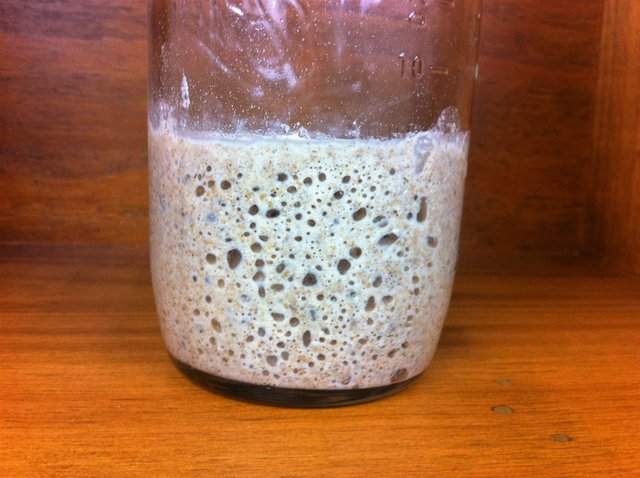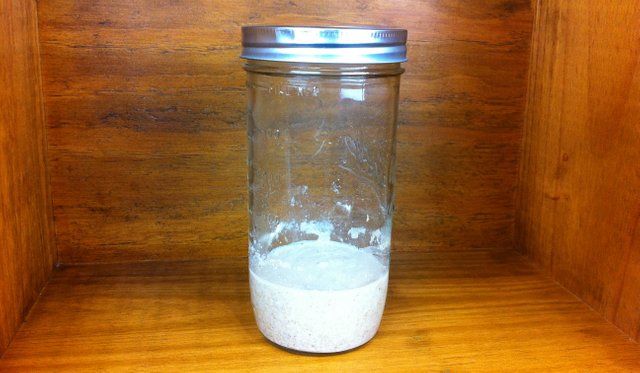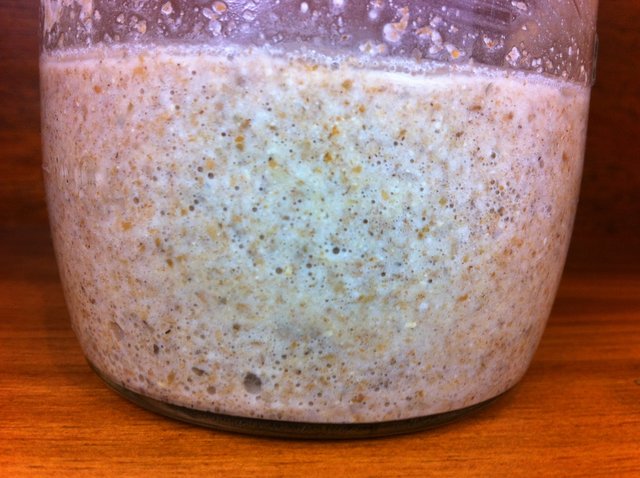How to create sourdough starter from scratch, the first step in making your very own sourdough bread.
In my first post I outlined why I'm keen to make my own bread, and more specifically why I make sourdough bread even though it is a such a slow process. The real key to making sourdough bread is all about sourdough starter, this is what is used instead of yeast. The success of your sourdough bread really comes down to how strong and active your sourdough starter is. This is what active sourdough starter looks like:
Ingredients? Simple - rye flour, water and time. Time is the key point here, you really need plenty of it when you're first getting started. It can take a few weeks to get a good strong sourdough starter going as the bacteria need time to multiply. However once your sourdough starter is going, you can keep it forever and you never need to go through the process again. There are stories of sourdough starters that are over a 100 years old!
Sourdough starter is a culture of 'good' bacteria that thrive in rye flour. It is this that gives sourdough bread it's unique flavor. Rye is the most popular flour used for sourdough starter as it does the job very well. Rye flour creates the perfect environment for all the bugs you need and it is very resilient over the long term creating a solid sourdough starter that can be kept for years on end.
Creating your sourdough starter from scratch
First day
In a glass jar, add 50g/2oz of rye flour and 50g/2oz of filtered warm water. Stir the mixture up and try to add in air using a whisking motion. Once the all the flour and water has mixed together, put the lid on the jar and place it in a warm part of your kitchen or house. Ideally at between 15 to 25C/59-77F. This is when the waiting begins. You're waiting for the fermentation process to begin.
Second day
After 24 hours revisit your mixture, there may be signs of tiny bubbles at this stage, if not, don’t be concerned. Stir more air into the mixture and make sure the area is warm enough.
Third day
Add more rye flour to provide the bacteria with nutrients to thrive on. Add in 50g/2oz of rye flour and 50g/2oz of warm filtered water. Place the lid back on the jar and put it back in it’s warm place to continue fermenting. Revisit the starter at the end of the day and look for the beginnings of tiny bubbles in the mixture.
Fourth to seventh day
Continue to add in the same amount of flour and water, this process can continue for another week or so. The success of your sourdough starter is dependent on giving the natural bugs in the flour the perfect environment to thrive, and that involves a warm room temperature, regular feedings of rye flour, warm filtered water and whisked in oxygen. There is no exact timeline as the fermentation process is dependent on how many bacteria are available in your flour and the environment, and the room temperature.
Finished sourdough starter!
Your sourdough starter is ready to use when it has risen and has large bubbles, a sponge like appearance.
This is an indication of a strong, active, healthy sourdough starter. Use it for recipes but make sure to always save a small amount, feed it rye flour and water once to twice a week and store it in the refrigerator. When you're ready to use it again, take it out of the refrigerator, feed it, wait until it becomes bubbly and active. Happy sourdough-ing!



Sourdough bread is amazing!
Now, if I only can find Burt Reynolds, he can get me that Clam-chowder soup, and I will make me a breadbowl!
Breadbowl with clam-chowder soup sounds delicious!